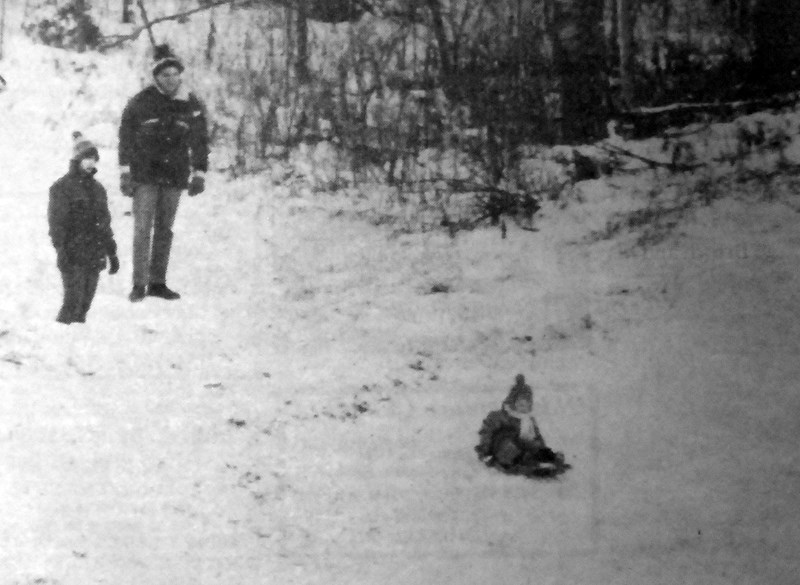Jan 4, 1989 Round Up file photo
New Year’s Day in Sundre was a time for families to spend together. Pictured here are Mr. and Mrs. John Huey, who spent part of the afternoon on Jan. 1, 1989, pulling their oldest son up the east side of Snake Hill and watching him enjoy the slide back down. Their youngest child remained on his sleigh at the bottom of the hill while their two dogs raced around in the snow and trees.
Jan. 4, 1999 Round Up file photo
This moose was seen kneeling down enjoying an early morning munch in Sundre’s northeast the week prior when he was photographed by resident Jack Duggan. The moose and its companion had been seen in the area several times in recent weeks. Fish and Wildlife officers advised people to remain well clear of any moose that might wander into the municipality’s limits. Pet owners were also encouraged to ensure their animals do not approach or bother wildlife that is passing through the area.
Jan. 6, 2009
The Round Up featured a story highlighting ice safety tips to encourage outdoor enthusiasts to take every precaution when playing on or around ice. Sundre fire Chief John Whitesell said rivers are particularly dangerous at this time of year.
"The thing that scares me at this time of year is people going either cross country skiing or hiking or snowmobiling across the rivers. Even though it may look like solid ice, it could be very thin because of the moving water underneath,” he said. "Snowmobiles can sometimes get away with it if they are going fast enough at the time, but that’s not safe, and they could fall through and at that point they are in big trouble. It is very cold and if you are swept under the ice your chances of survival are very low.”
As for lakes and ponds, people should make sure to check the thickness of the ice before proceeding onto the surface. Additionally, calling for emergency help in the event someone breaks through should be the priority, as rushing out to help might merely end up adding another person who needs to be rescued.
"Call for help immediately and don’t attempt a rescue yourself unless you can do it reasonably safe. That means using something like a ladder, toboggan, plywood, or some such material to distribute your weight over a greater surface area of the thin ice. A boat would be best,” said Larry Gratton, operations manager with Mountain View Regional Emergency Services.

